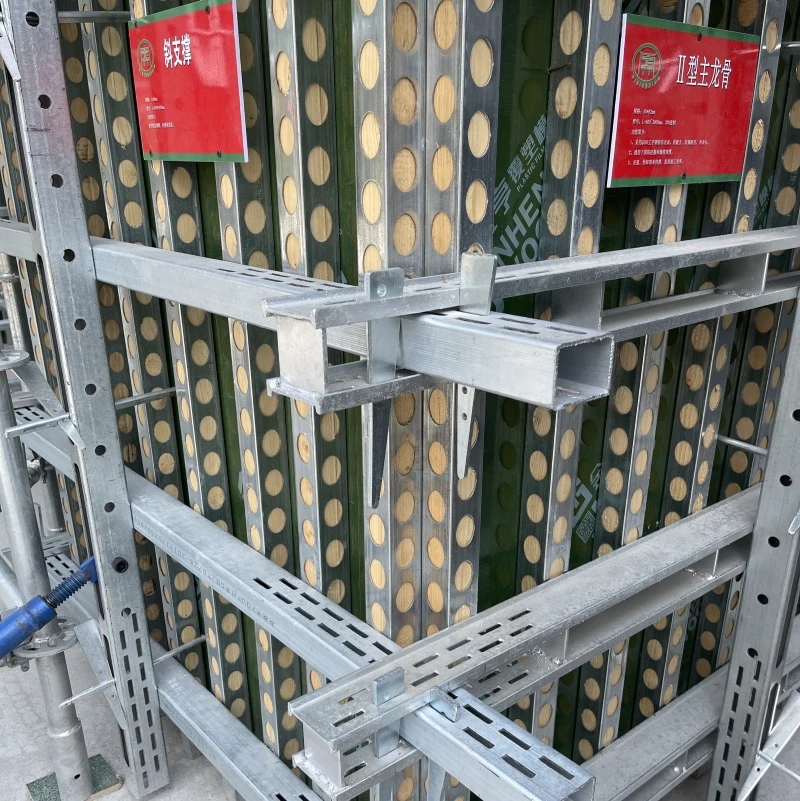
tube and coupler scaffold design
Understanding Tube and Coupler Scaffold Design
Scaffolding is an essential aspect of construction and maintenance work, allowing workers to safely reach elevated areas and providing a stable platform for materials and tools. Among various scaffolding systems, tube and coupler scaffolding is one of the most versatile and widely used options in the industry. This article delves into the design, applications, benefits, and considerations of tube and coupler scaffold systems.
What is Tube and Coupler Scaffolding?
Tube and coupler scaffolding consists of steel or aluminum tubes and couplers that connect the tubes to form a stable structure. The tubes are typically available in varying lengths, which can be combined to create different heights and widths. Couplers, which are fittings that join the tubes, are available in several types, including right-angle couplers, swivel couplers, and putlog couplers. The flexibility of the system allows it to be customized to accommodate a wide range of construction scenarios.
Design Principles
The design of tube and coupler scaffolding is crucial for ensuring safety and efficiency on construction sites. Several key principles guide the design
1. Load-Bearing Capacity The system must be designed to withstand the weight of workers, materials, and tools. This involves calculating the expected loads and selecting appropriate materials and dimensions for the scaffolding components.
2. Stability Proper bracing and support are vital for maintaining the stability of the scaffold. Diagonal braces are often incorporated to prevent lateral movement and ensure the structure remains upright.
3. Height and Access The design must provide adequate height for workers to reach their tasks while ensuring safe access. This often includes stairways or ladders to help workers ascend and descend.
4. Safety Features Safety should be a primary concern in the design phase. Guardrails, toe boards, and safety nets can be integrated into the scaffold to protect workers from falls and falling objects.
Applications of Tube and Coupler Scaffolding
Tube and coupler scaffolding is widely used across various construction sectors due to its adaptability. Some common applications include
- Building Construction This system is frequently used for residential and commercial building projects, providing necessary access for bricklaying, painting, and other activities on multi-story structures.
- Industrial Sites In factories and warehouses, tube and coupler scaffolding serves maintenance purposes, allowing workers to perform inspections and repairs safely at heights.
tube and coupler scaffold design

- Entertainment Industry The scaffold system is also employed in the staging of concerts, exhibitions, and film sets, where temporary structures need to be erected for events
.- Renovation and Restoration For projects that involve historical buildings, tube and coupler scaffolding allows for precise adjustments to accommodate unique architectural features.
Benefits of Tube and Coupler Scaffolding
The tube and coupler scaffold system offers numerous advantages
1. Versatility Its modular nature allows it to be adapted for various configurations, making it suitable for different project needs.
2. Cost-Effectiveness Given its reusable components, tube and coupler scaffolding can be a more affordable option compared to other scaffolding systems, particularly for larger projects.
3. Ease of Assembly and Disassembly Skilled workers can quickly set up and take down the scaffolding, reducing downtime and increasing productivity on the job site.
4. Strength and Durability Made from robust materials, tube and coupler scaffolds offer long-lasting performance, resisting wear and tear over time.
Considerations for Effective Design
While tube and coupler scaffolding is a reliable option, certain considerations must be taken into account during the design phase
- Regular Inspections Scheduled inspections are essential to identify wear or fatigue in materials, ensuring that safety standards are consistently met.
- Training and Qualifications Only trained personnel should assemble and dismantle scaffolds to avoid accidents and ensure compliance with safety regulations.
- Weather Conditions Weather can significantly affect scaffolding stability. Design considerations should include provisions for adverse weather conditions, such as high winds or heavy rains.
In conclusion, tube and coupler scaffolding plays a vital role in modern construction practices, offering versatility and safety. With careful design and implementation, it allows for efficient access and working conditions, ultimately contributing to the successful completion of construction projects. Its adaptability, cost-effectiveness, and durability make it a preferred choice for many contractors worldwide.
-
The Essential Role of Timber and Steel in Modern ConstructionNewsMar.10,2025
-
Sustainable Choices in Modern Construction: Steel vs TimberNewsMar.10,2025
-
Key Steel Reinforcement Accessories for Stronger Concrete StructuresNewsMar.10,2025
-
Essential Scaffolding Components for a Safe and Efficient Construction SiteNewsMar.10,2025
-
Comprehensive Guide to Scaffolding ComponentsNewsMar.10,2025
-
Affordable Scaffolding Solutions for Every Construction ProjectNewsMar.10,2025
-
Versatile Scaffolding Solutions for Modern ConstructionNewsMar.03,2025










